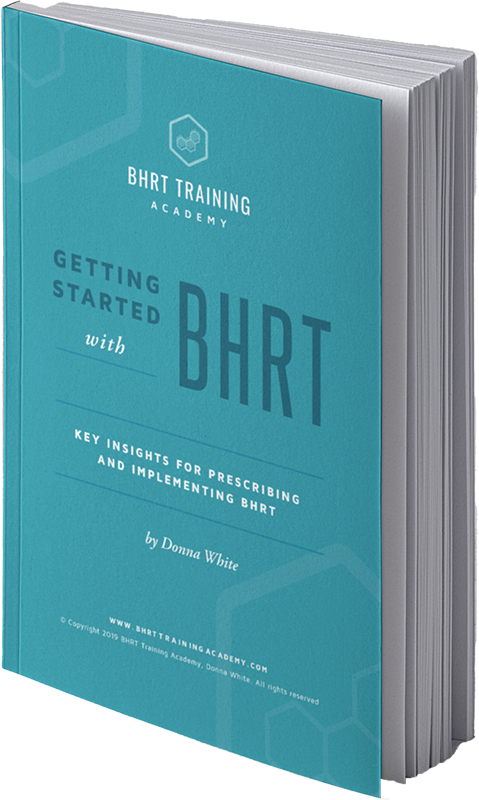Pros and Cons of Different Dosing Forms of Bioidentical Hormones

Here we outline the pros and cons of dosing forms of bioidentical hormones to help you offer your patients thorough and accurate information on formats and dosing.
Delivery Formats of BHRT: Why it Matters
We recently wrote about one small study which discussed the reasons why more women today are turning to compounded BHRT for menopause-related symptoms, and finding it effective.
The effectiveness of a given treatment may vary depending on factors such as:
- The patient’s age and risk profile
- The patient’s specific symptoms
- The patient’s preferences and wellness goals
- The combination of hormones offered
- The dosage amount
- The format of the treatment
Tailored prescriptions and individualized treatments are central to BHRT therapy, and this often requires a fine-tuned approach to see results.
Thus, it’s essential that health practitioners have a solid grasp on the different ways that these formats are used, and understand the benefits and drawbacks of each.
Delivery Formats and Dosing Forms of Bioidentical Hormones
Following is a comprehensive overview of the different delivery methods of BHRT, including:
- Transdermal creams
- Transdermal gels
- Transdermal patches
- Sublingual tablets
- Injections
- Pellet insertion
- Oral pills
There are other ways to administer HRT treatments, but these are the most common and widely available.
Transdermal Creams
Bioidentical creams can help to offer the patient lower doses of hormones. These can be prescribed in compounded format, and the dosage is easily adjustable.
For maximum effect, it is recommended that patients use them after they bathe, and apply to thin areas of skin.
Benefits
- Easy to use
- Bypasses GI tract and liver for maximum absorption
- Best monitored with saliva or blood spot
- Dosage easily adjusted
- Unlimited dosages
- Multiple hormones can be combined
- Can vary application site to include face, vagina, or labia
Drawbacks
- Can be transferred to others
- Possible sensitivity to base
- Cannot be accurately monitored in serum
- Poorly absorbed in a very small percentage of patients
- The patient is unable to shower or swim immediately afterward
- Must be applied at the same time of day and could be required twice daily
Transdermal Gel or Patch
Gels and patches may be a top choice of dosing forms for some bioidentical hormones in terms of its convenience, but it should be noted that they are only available for estradiol.
There is no need to remember to take or apply the hormones daily, and they can wear them under their clothes, usually around the waistline area. Typically patches are changed twice a week.
The main drawback of patches and gels is that there are currently no options for compounded treatments.
Benefits
- Easy and convenient to use
- Not subject to 1st pass effect in the GI tract or liver
- Can be monitored with saliva, dried urine, or serum
- Easily adjusted dosage
- Can wear anywhere on the body
- Patches offer sustained and even release over 1-2 weeks
Drawbacks
- Limited dosages
- Single hormone formulations only
- Possible sensitivity or allergy to the adhesive in patches
- May be difficult to reapply patches if they fall off
Oral
Only bioidentical progesterone and DHEA should be used orally. When taken orally, an estimated 90% is converted to metabolites.
This is an issue of concern when it comes to estradiol, since oral estradiol may increase the risk of stroke and blood clots.
On the other hand, the metabolites of oral progesterone cause drowsiness and are anti-anxiety. Therefore many practitioners prescribe oral progesterone to be taken at night for their patients with sleep disturbances or anxiety.
Benefits
- Easy to use
- Downstream metabolite effect advantageous for progesterone
- Monitoring limitations with progesterone due to cross-reaction of metabolites
Drawbacks
- First pass effect
- Monitoring limitations due to short half-life and timing of dosing
- Negative side effect profile for estrogen due to binding proteins and increased risk of clotting factors, increased conversion to estrone which may be converted to potentially carcinogenic metabolites, increased triglycerides, increased interleukin 6, increased TBG
Sublingual Troches or Rapid Dissolve Tablets
Either of these formats can offer a simple solution for those who wish to take hormones orally, or if you’re looking for very specific combinations of hormones.
Although sublingual troches will typically bypass the GI tract and liver, there is a chance that some of the tablets will be swallowed and subject to the first pass effect. which means there may be risk associated with estradiol.
One other possible disadvantage is the taste — if this turns a patient off, they may not keep the tablet in the mouth long enough to have the treatment be effective.
Benefits
- Easy to use
- Easily adjusted
- Unlimited dosages
- Multiple hormones can be combined
Drawbacks
- Significant amount potentially swallowed
- Subject to the first-pass effect with side effect profile similar to oral
- Monitoring limitations in serum due to short half-life and timing of dosing
- Monitoring limitations in saliva due to contamination
Injectable
Testosterone injections are very popular with male patients. To keep testosterone levels more stable, it is best ingested once weekly. Some providers instruct their male patients (or their partner) in how to give themselves injections.
Injections may be preferred over testosterone pellets by some male patients.
Benefits
- No exposure to others
- Not subject to 1st pass effect
- Levels relatively stable if injected weekly
- Can adjust the dosage if needed
- Easily monitored in serum, saliva, or urine
Drawbacks
- Patients may be unwilling or unable to self-administer, leading to a lack of compliance with treatment protocol
Bioidentical Hormone Pellets
Like patches, hormone pellets are a top choice when it comes to convenience, because of the fact that they offer a sustained dosage, but where a new patch needs to be applied every 3 days, a pellet will last for months.
Typically estrogen pellets will be inserted in the hip or stomach via syringe. This is a very minor procedure that requires a local anesthetic.
However, the fact that they are invasive offers potential drawbacks like a small risk of infection.
Hormone pellets are a top choice when it comes to convenience, with varying doses of estradiol and testosterone available in this form.
Often male patients prefer testosterone pellets over weekly injections since pellets may sustain testosterone levels for 4 months.
Some female patients also prefer the convenience and effectiveness of hormone pellets.
Progesterone should be administered orally or topically if an estradiol pellet is used.
Benefits
- No exposure to others
- Bypasses GI tract and liver for maximum absorption
- Pellet dissolves in the body
- Ensures a steady dose and compliance with directions
- One application lasts from 3-6 months
- Easily monitored in serum, saliva, or urine.
Drawbacks
- Invasive –requires a small incision under local numbing
- Cost may be higher than alternatives
- Possible soreness at the site of insertion
- Inability to alter the dosing
- Inability to remove the pellet
- Can alter booster dosing in 6 weeks
- Risk of infection
Get Started With BHRT Treatments
Many individuals are discovering the benefits of BHRT as an effective way to reduce symptoms related to menopause, perimenopause, and even andropause.
Understanding the various effects and dosing forms of bioidentical hormones is essential for health care practitioners who want to offer BHRT therapy.
The individualized treatment that BHRT offers can help women and men feel more empowered about their own health.
To learn more about how to prescribe BHRT effectively and safely, schedule a free strategy call with us.
Enjoy this article? Here are three more to learn from:
An Overview of Anti-Aging Market Trends
5 Reasons You Should Learn to Prescribe Bioidentical Hormones
What Happens When Women Age?

Get the quick read ebook,
Getting Started with BHRT -
Key Insights to Prescribing and Implementing BHRT.
CME's - Earn while you learn.
